How to Fix a Garbage Disposal

Last updated September 7, 2023
Your kitchen routine is disrupted when the garbage disposal won’t turn on. You’ve become used to flicking a switch to shred the dinner scraps before it goes down the drain. When the disposal fails to work, a clogged drain becomes a real worry and garbage disposal repair becomes a necessity.
In this guide you’ll become familiar with common signs that your garbage disposal is not working. Find out what to do if it jams, hums, stalls or clogs. You’ll learn how to troubleshoot these problems and how to fix a garbage disposal when it fails to work.
Difficulty:
Intermediate
Duration:
Under 2 hours
Table of Contents
How a Garbage Disposal Works
Best Practices for Using a Garbage Disposal
Troubleshooting a Garbage Disposal
Gather Tools and Materials
Check Electrical Connections
Rotate the Impeller Plate
How a Garbage Disposal Works
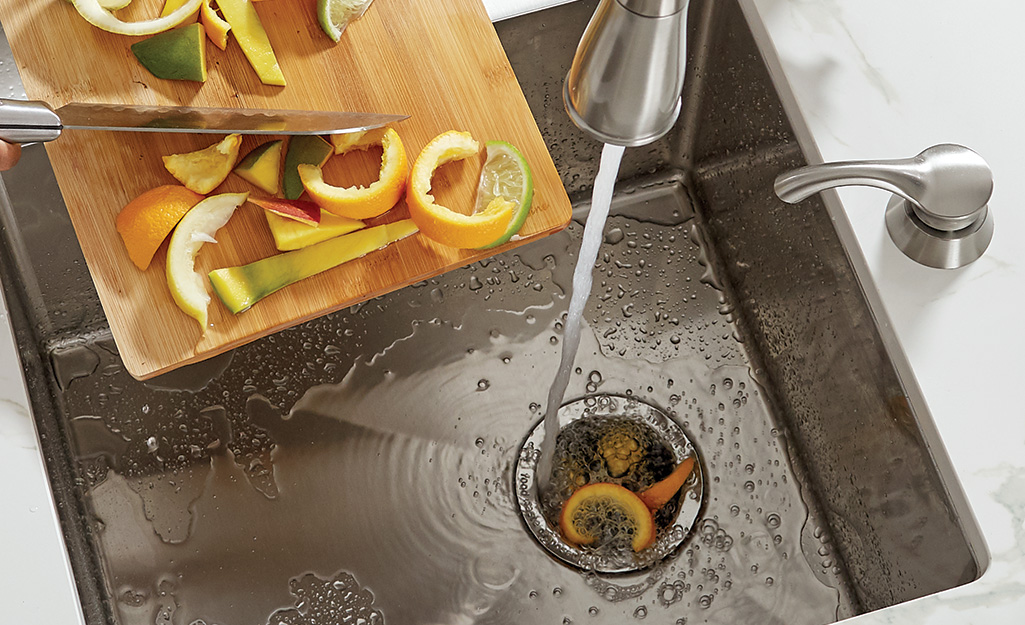
A garbage disposal, like most kitchen appliances, is powered by a cord connected to an electrical outlet or hardwired to your home’s power supply. Look under the kitchen sink; that’s where the garbage disposal unit is. If you have a double sink, it’s mounted at the drain closest to the electrical source. It is important to disconnect the unit before fixing a garbage disposal or even looking it over.
How does a garbage disposal work? Food waste goes down the sink into the disposal, where a disc called an impeller plate spins rapidly when the unit is switched on. The impeller blades do the work of processing the scraps for flushing.
The best garbage disposals can fail after years of work. Your first impulse before fixing a garbage disposal would be to place your hand in the disposal opening to check for an obstruction. Even a garbage disposal not working could switch on without warning. Placing your hand in a garbage disposal is dangerous and should never be done prior to checking the disposal.
Best Practices for Using a Garbage Disposal
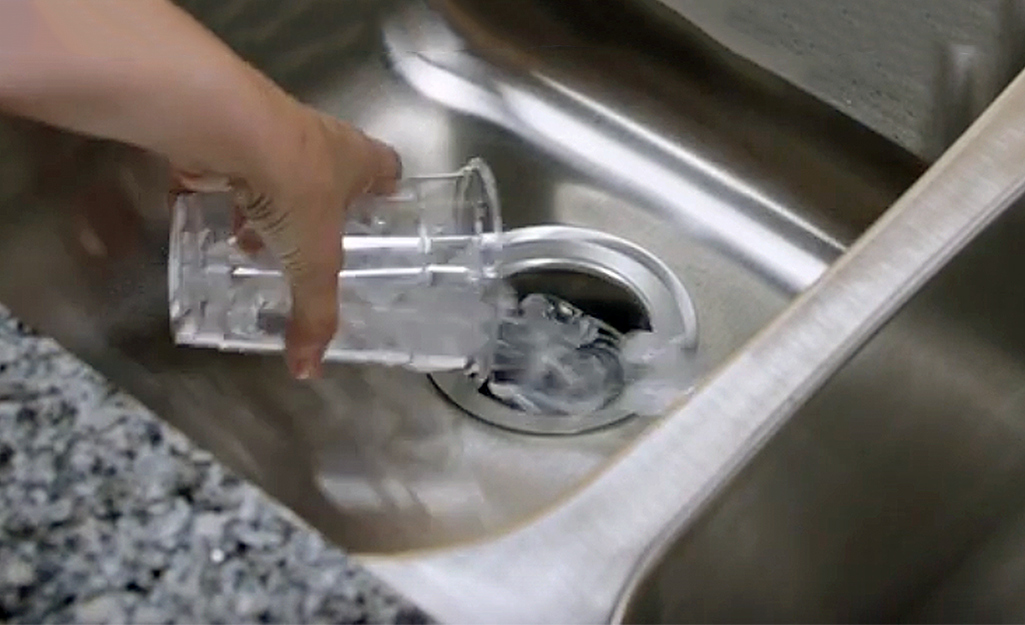
You can head off garbage disposal repair by following some best practices:
- Run the unit regularly to prevent rust and corrosion.
- Use cold water to flush the food scraps. Hot water will cause any grease, oils and fats to liquify and clog your drain.
- Keep the disposal clean by pouring some dish soap in and letting it run for a minute with cold water.
- Don't overload the disposal; grind no more than about 1 cup of food debris at a time.
- Grind a cup of ice in the garbage disposal to sharpen the blades and keep the unit maintained.
Troubleshooting a Garbage Disposal
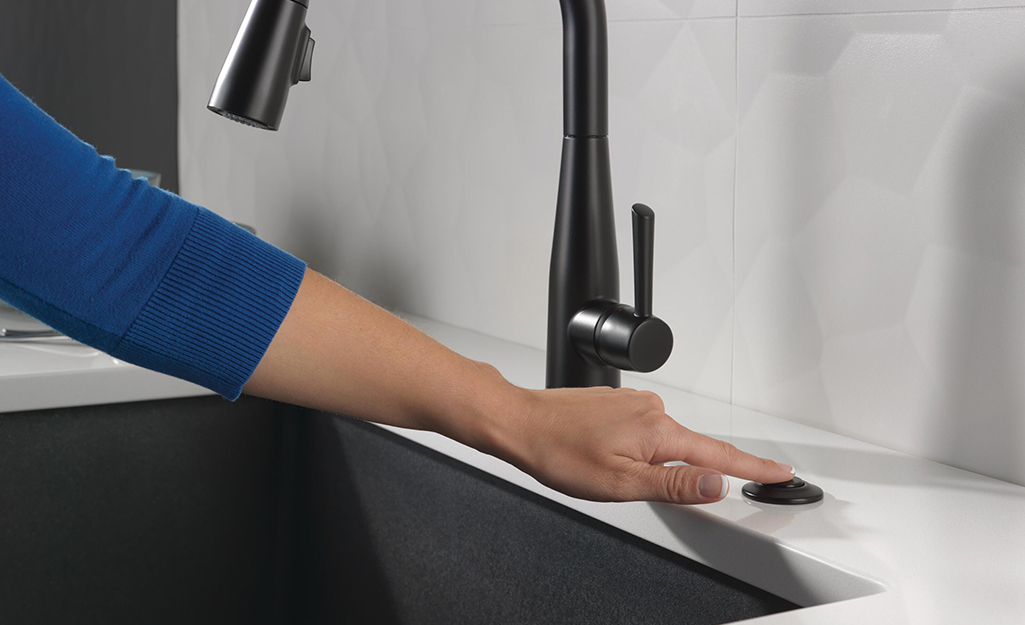
These are common signs of a garbage disposal not working and what to watch for before fixing a garbage disposal.
- The garbage disposal won’t turn on when you hit the switch.
- The garbage disposal switch is not working.
- The unit is humming but not operating.
- The garbage disposal won’t turn off.
- Puddles of water indicate a leaky garbage disposal.
- Drainage of the disposal is slow or it does not drain at all.
Gather Tools and Materials
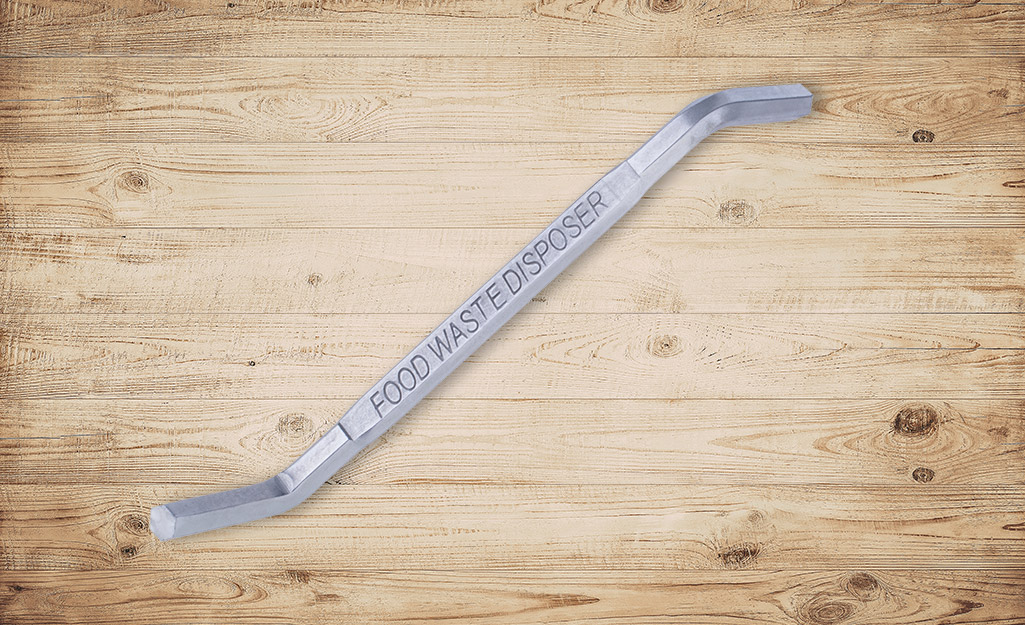
You will need a few supplies before beginning your garbage disposal repair task:
- Screwdriver sets
- Hex key
- Garbage disposal wrench
- Flashlight
- Long nosed pliers
- Clamp
- Bucket
- Plunger
Check Electrical Connections
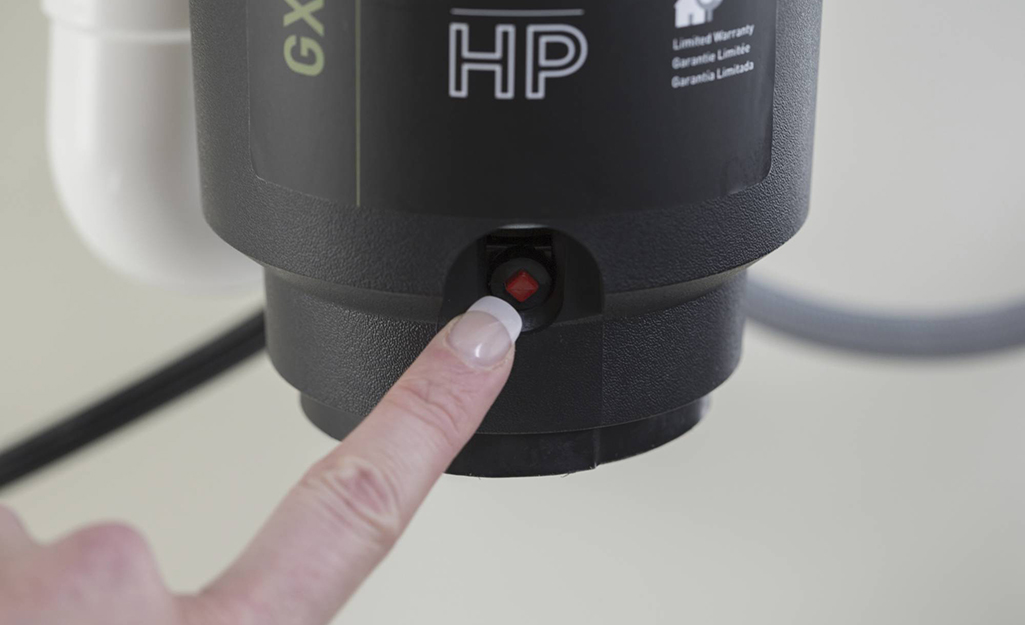
If the disposal shows no activity at all, an electrical problem may be the reason. This is when you’ll have to know how to reset a garbage disposal.
Where is the reset button on a garbage disposal? It is at the bottom of the unit in most cases. Once you locate it, the reset is a relatively simple task.
This is how to reset a garbage disposal once you’ve located the reset button:
- Check if the garbage disposal is plugged in.
- Press the garbage disposal reset button on the bottom of the unit, then try to switch on the unit.
- Check your main electrical panel to see if the circuit breaker to which the device is connected has tripped.
- If none of these solve the problem, the garbage disposal installation wiring needs checking.
Rotate the Impeller Plate
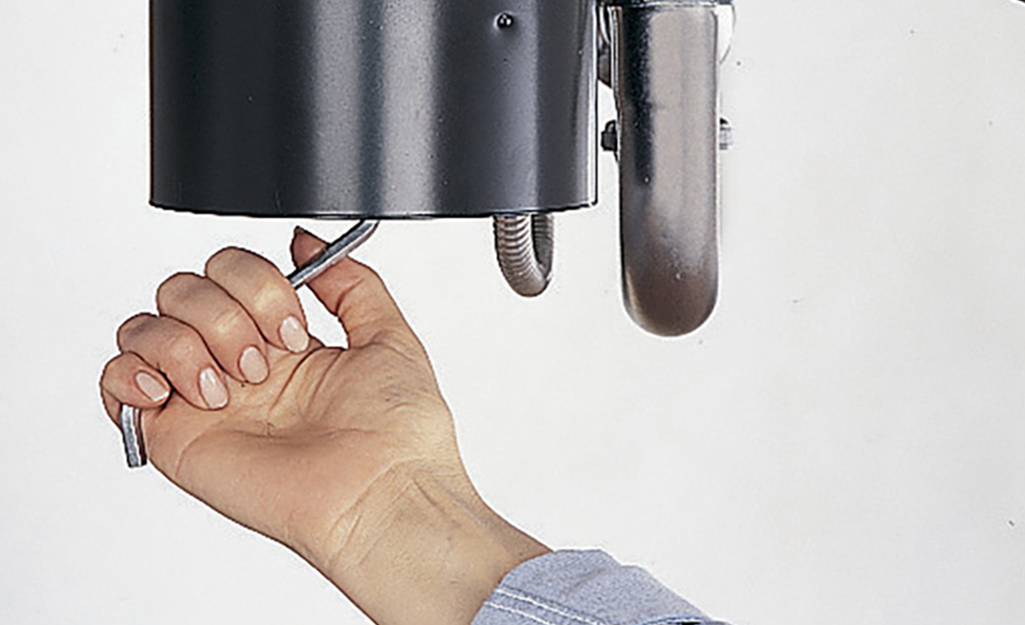
When you switch on the garbage disposal and it produces a low, humming sound, something is keeping the impeller plate or flywheel from turning. The humming means the motor is running even as the disposal is not operating. If it goes on for too long, the motor can burn out unless it trips the circuit breaker.
You must manually rotate the impeller to get it moving again.
- Turn off the disposal and unplug the unit. If the disposal is hardwired to the home, shut off the circuit breaker the controls it at the panel.
- Use the garbage disposal wrench and insert it into the flywheel turning hole at the bottom of the unit. Turn the wrench clockwise to free the stuck impeller or flywheel.
- You could use a wooden object like a spoon handle to reach into the disposal through the drain opening and dislodge the stuck impeller plate.
Rotate the Blades
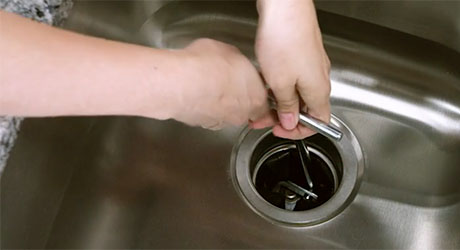
The blades attached to the impeller plate can get stuck over time. When the blades fail to work properly, food waste can clog the sink and prevent water from draining.
The blades attached to the impeller plate can get stuck over time. When the blades fail to work properly, food waste can clog the sink and prevent water from draining.
- Unclog the kitchen sink by clearing standing water with a plunger or by bailing the sink out and pouring the excess water into a bucket.
- If you have a dishwasher, prevent dirty water from backflowing into the dishwasher line by attaching a clamp to the flexible part of the drain line.
- Insert the hex key (also called an Allen wrench) into the blade access hole at the bottom of the garbage disposal.
- Turn the hex key back and forth to rotate the blades until you feel the clog break up and the blades move more freely.
When Garbage Disposal is Leaking From Top
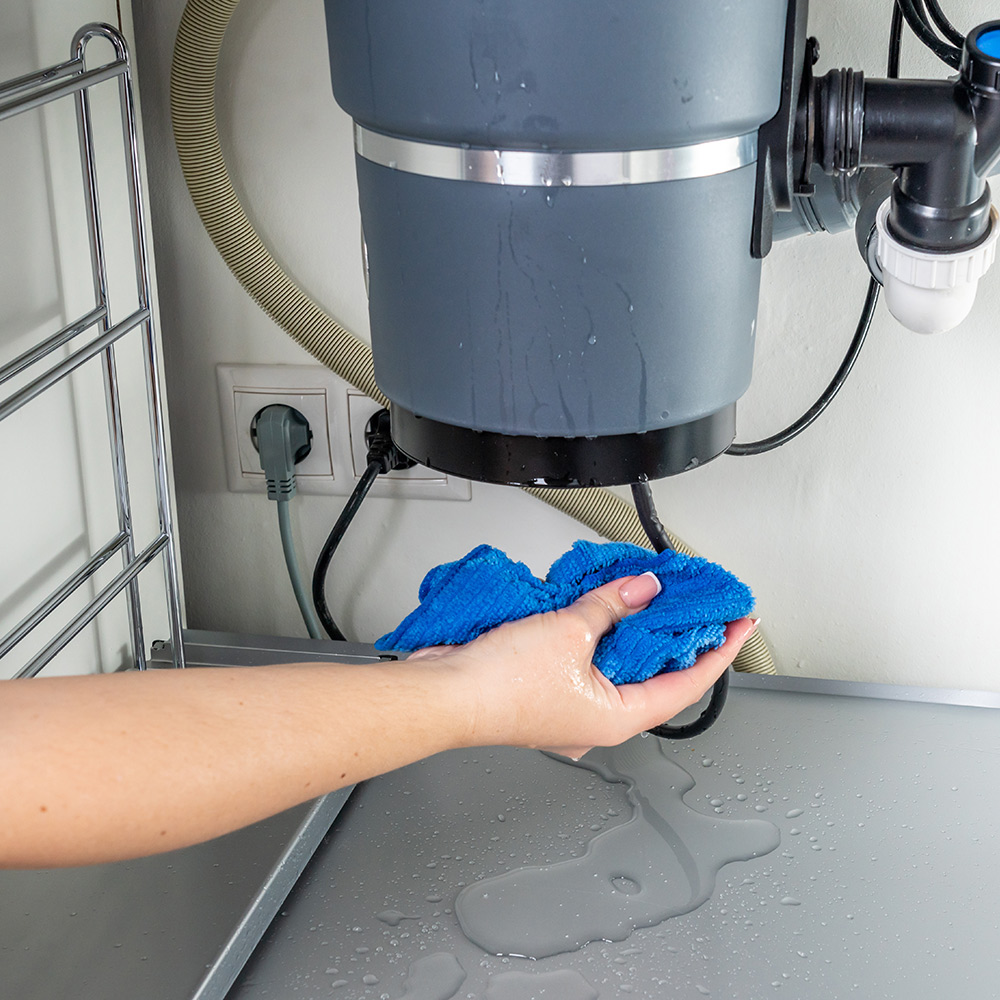
A leaky garbage disposal could happen drip by drip over time. Vibrations from grinding food waste can loosen the mounting flange that holds the unit to the sink drain opening. Old sealant can also be the reason the garbage disposal is leaking from the top. Do these steps when you see signs of the unit leaking. You’ll need to know how to fix a leaking garbage disposal before it gets worse.
- Turn off the disposal and unplug the unit. If the disposal is hardwired to the home, shut off the circuit breaker the controls it at the panel.
- Take a flashlight and examine the disposal under the sink to locate the source of the leak.
- If the leak is coming from the top, the source is at the metal flange directly inside the sink drain.
- Look for the disposal mounting ring under the sink. Turn the disposal counter clockwise to loosen and remove it from the mounting flange.
- Loosen the mounting bolts holding the flange to the sink. Lift the flange from the top of the sink.
- Scrape off the old plumber’s putty and wipe off any residue with a rag.
- Apply a small amount of plumber’s putty around the top of the flange. Set the flange into the sink drain opening.
- Retighten the mounting bolts. Reinstall the disposal and plug it back in or turn the power back on at the circuit breaker panel.
When Garbage Disposal is Leaking From Bottom
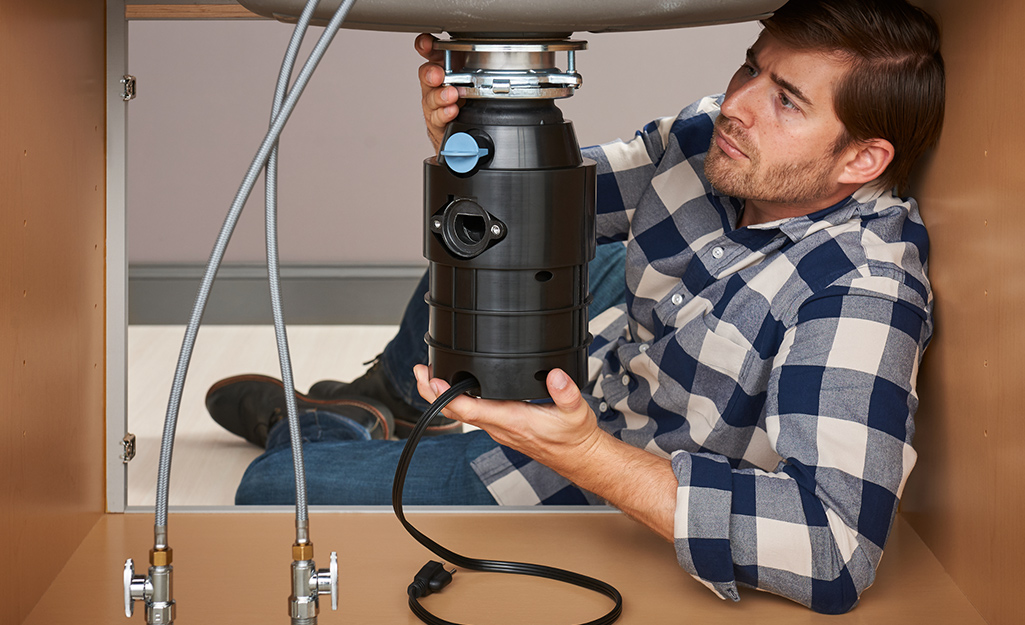
A garbage disposal leaking from the bottom indicates a failed seal or the shell of the unit itself has cracked. If the source of the leaky garbage disposal is at the bottom, the garbage disposal has to be replaced.
Follow the steps that show you how to take apart a garbage disposal:
- Shut off the garbage disposal’s power source by switching off the power at the breaker box.
- Place a bucket under the connection between the disposal unit and drain pipe. Use one of your adjustable wrenches to loosen the connector by turning it counterclockwise.
- Disconnect the hose to the dishwasher (if you have one) by loosening the screw that holds the clamps.
Place the hose in the bucket to catch any remaining water. - A mounting bracket connects the garbage disposal to the sink drain and holds it in place. Insert a hex key or screwdriver into one of the metal loops or use a fastening tool or wrench to turn the bracket counterclockwise. The disposal will loosen and disconnect from the sink.
- Remove the cover plate at the bottom and unscrew each wire nut connector to disconnect the wiring to the disposal. Pull the wires out.
What to Put Into a Garbage Disposal

A garbage disposal can grind almost anything that is biodegradable. There are also items that are best to avoid putting into one. Follow these tips to keep the garbage disposal from malfunctioning and to protect the sink parts.
What can you put down a garbage disposal? Any food scraps that are soft and easy to process.
- Vegetable scraps
- Fruit scraps
- Fish bones
Here’s what not to put into a garbage disposal:
- Cooking fats, grease and oils. They are tough for a disposal to break down and if they do, the fat and grease can go through the drain and clog the pipes.
- Large bones, fruit seeds and cores, fibrous plant scraps and raw vegetables. This solid food waste can dislodge the internal seals and grinding blades.
- Rice, pasta and other starchy food scraps. They can clump together and keep your sink from draining properly.
- Shrimp and seafood shells.
- Large portions of meat. The remnants from grinding can line the interior walls of the garbage disposal and smell over time.
- Coffee grounds. They can clog your sink over time.
A garbage disposal is a convenience in the kitchen.
A breakdown requires troubleshooting on your part and repair is relatively simple to do. Need a new garbage disposal or tools to do repairs to your existing one? Download The Home Depot Mobile App. You can choose a new garbage disposal and learn the basics of how to install the disposal safely and simply.



























